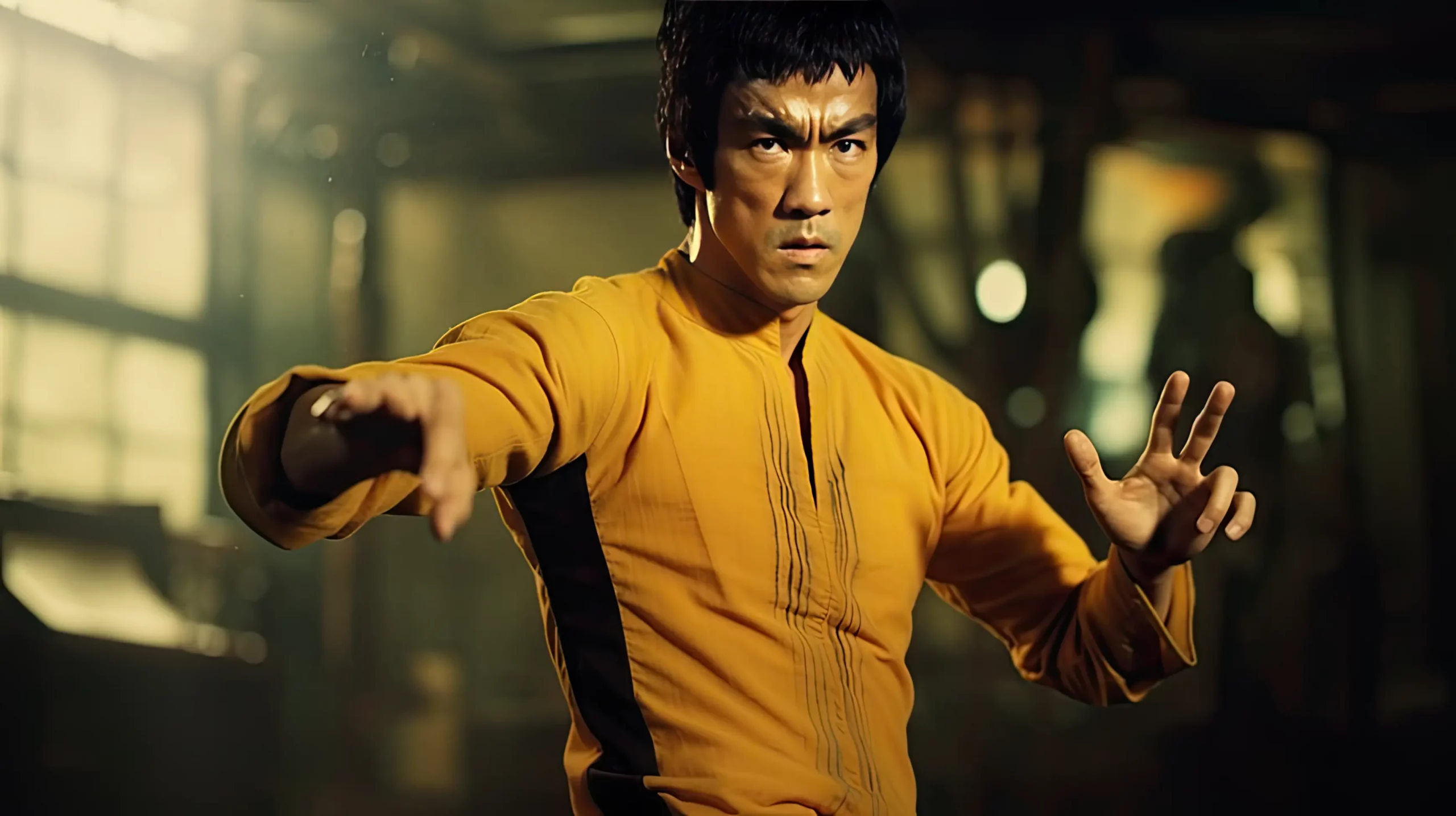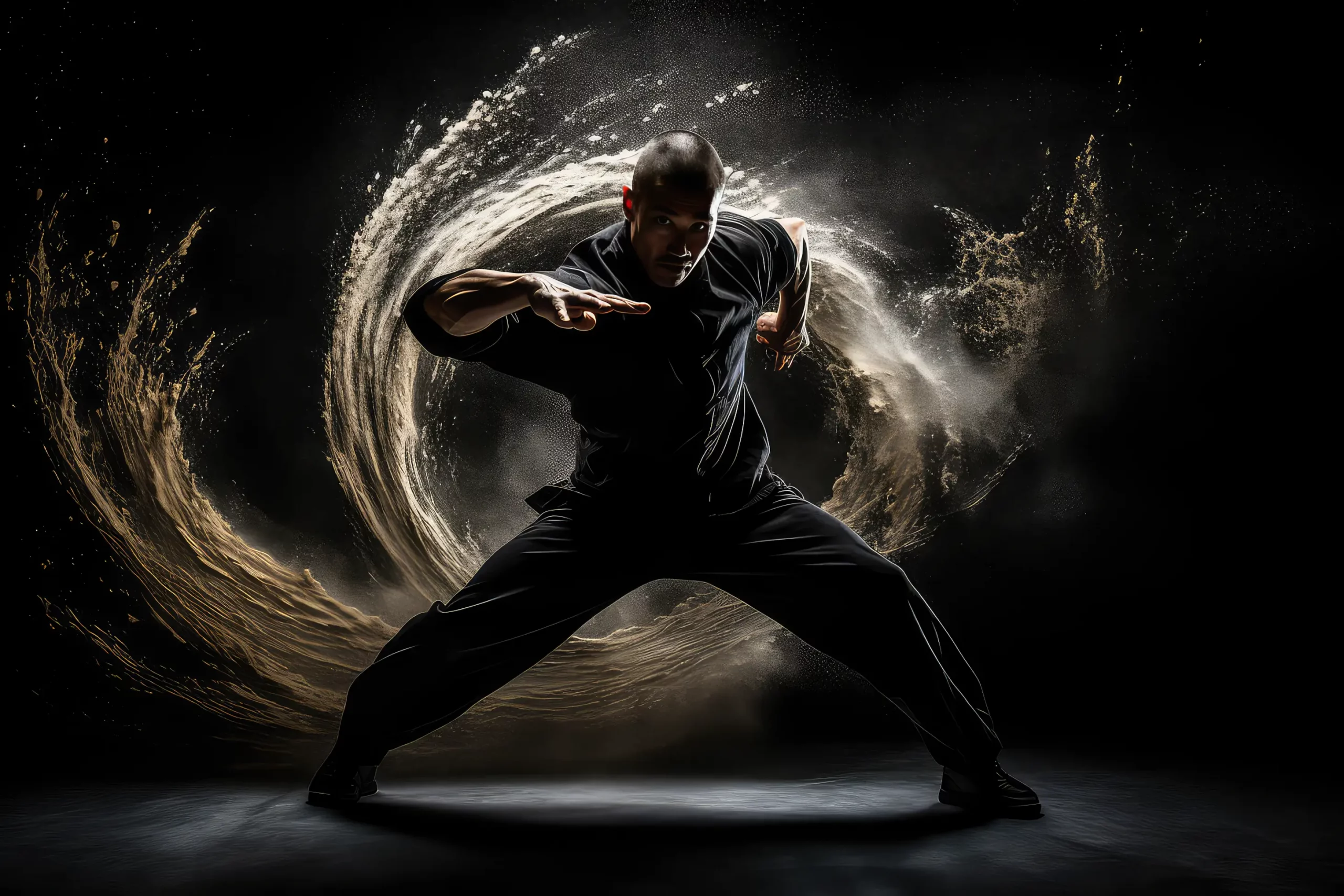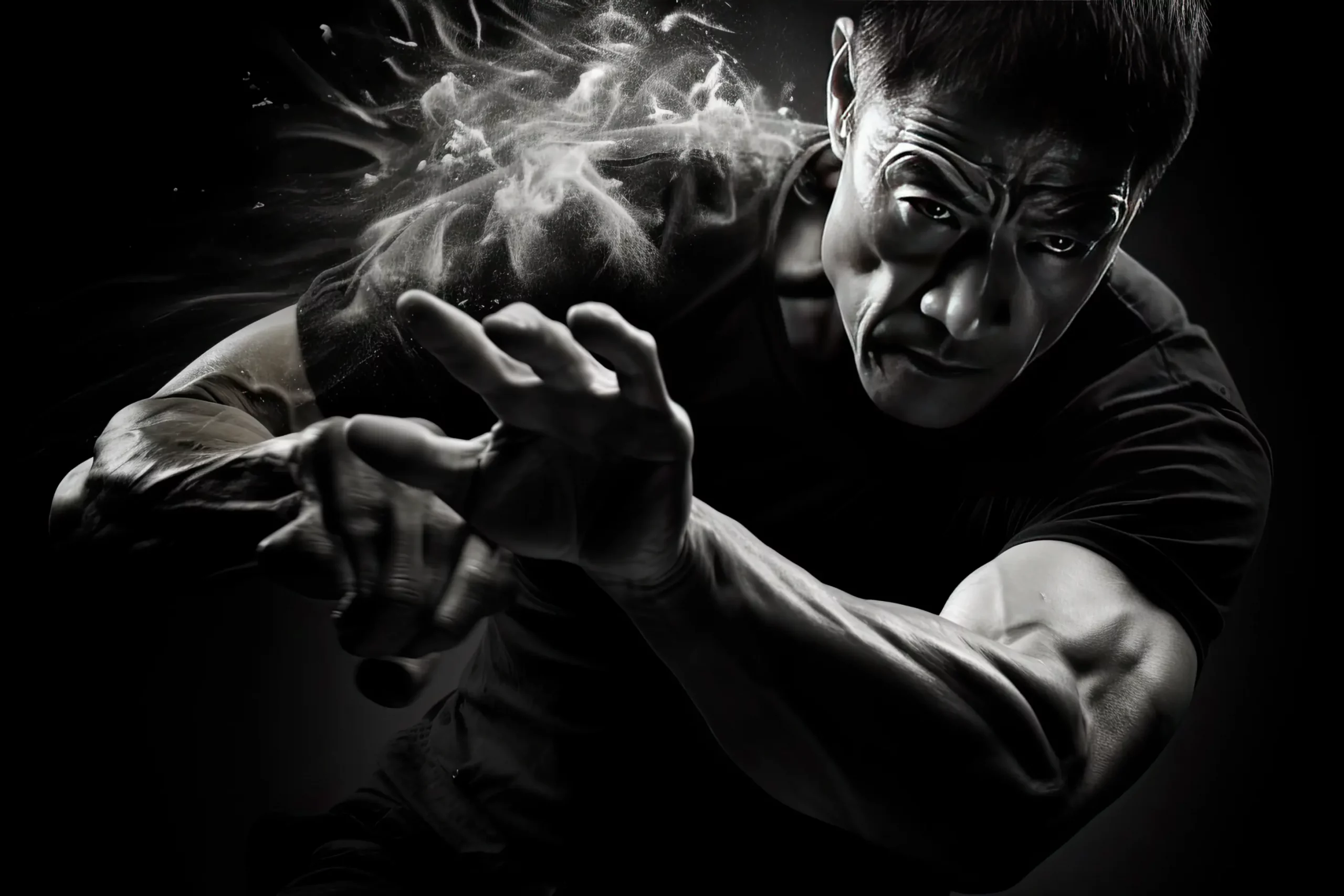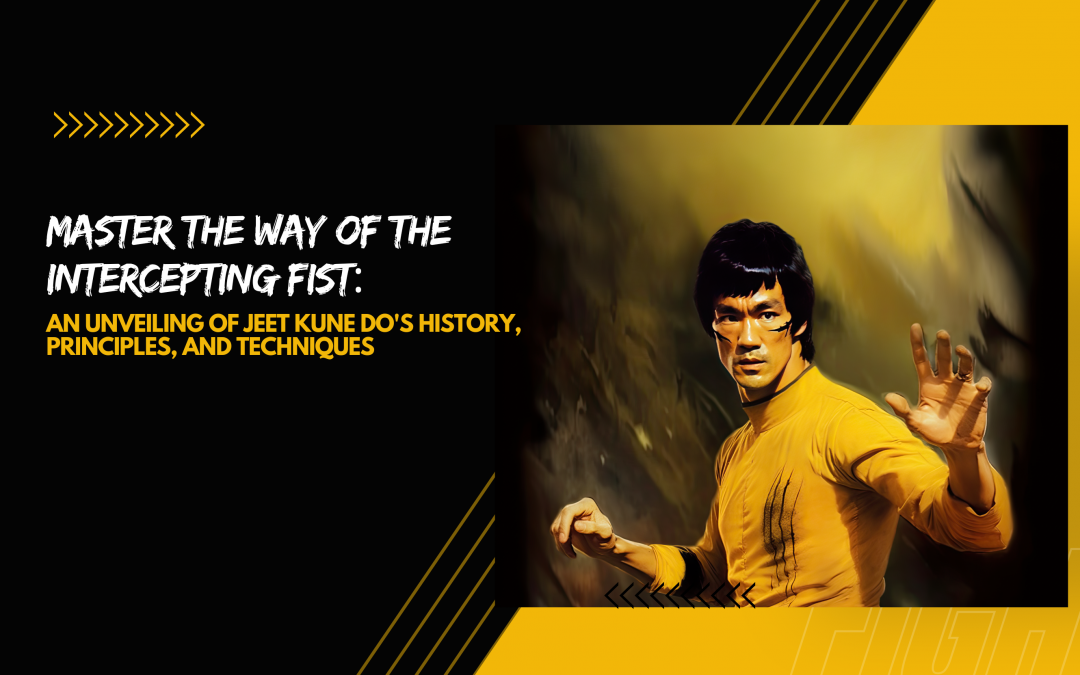Master the Way of the Intercepting Fist: An Unveiling of Jeet Kune Do’s History, Principles, and Techniques
Introduction to Jeet Kune Do
Jeet Kune Do, often abbreviated as JKD, is a renowned hybrid martial arts philosophy. Created by the martial arts legend Bruce Lee, JKD deeply embodies principles of simplicity, directness, and freedom, directly translating to “the way of the intercepting fist.” Bruce Lee devised this fighting style to transcend the confines of traditional martial arts, including Wing Chun.
JKD is not just about a set of fighting techniques but is an expression of oneself. It places a strong emphasis on the Principle of Economy, a principle implying a commitment to efficiency, advocating that every movement in martial arts, as in life, should be purposeful and straightforward. Such an approach mirrors Bruce Lee’s own commitment to the Economy of Motion, a foundational principle in his martial arts philosophy suggesting that every action should be purposeful and efficient.
In embodying the Principle of Economy and the Economy of Motion, practitioners of JKD aim towards using their energy most effectively, both within and beyond the scope of martial arts. Bruce Lee encapsulated these philosophies and his life’s learnings in Jeet Kune Do, heavily influenced by his foundational training in Wing Chun.
The History of Jeet Kune Do
Bruce Lee, born in San Francisco and raised in Hong Kong, began his martial arts journey with Wing Chun. Bruce Lee’s exploration of various martial arts styles, combined with his experiences in real combat situations, made him realize the inadequacies of traditional martial arts techniques, including his foundational training in Wing Chun, in a real fight.
He saw these techniques as too rigid and over-complicated for practical usage. Driven by his observations and experiences with Wing Chun, Bruce Lee ventured to create a martial arts form devoid of unnecessary rigidity or formality. His philosophy and practice of economy of motion were crucial in this endeavor, giving birth to Jeet Kune Do.
Influence of Western Boxing, Ranges of Combat, and Joe Lewis on Jeet Kune Do
Bruce Lee’s innovative approach to martial arts extended beyond traditional Eastern disciplines. His interest in Western Boxing, with its focus on speed, precision, and footwork, played a significant role in shaping Jeet Kune Do. He respected the straightforward and efficient strikes of boxing, the fluid movement, and the defensive techniques such as bobbing, weaving, and ducking. Lee integrated these elements into JKD, amplifying its focus on the Principle of Economy and the Economy of Motion.
Another influential figure in the development of Jeet Kune Do was Joe Lewis, a world champion in karate and a pioneer of full-contact kickboxing. Lewis studied under Bruce Lee for a time and incorporated many of Lee’s philosophies into his fighting style. The combination of Western Boxing’s efficient movements, combined with Lewis’s and Lee’s understanding of martial arts, added a new depth to JKD’s fighting technique.
Moreover, Lee underscored the concept of “ranges of combat.” He understood that real combat situations often fluctuate between various ranges – kicking, punching, trapping, and grappling. While traditional martial arts often specialize in one or two ranges, Lee intended for his JKD practitioners to be adaptable across all ranges. This fluidity across combat ranges further emphasizes the adaptability and freedom central to Jeet Kune Do and its adoption of fighting skills from other disciplines.

Principles of Jeet Kune Do
Jeet Kune Do is centered around two major philosophical concepts: “Using no way as way” and “Having no limitation as limitation.” This philosophy underscores the Principle of Economy, suggesting a minimalist approach that dispenses with unnecessary movements or techniques, a departure from fixed or patterned martial arts such as Wing Chun.
Instead, JKD emphasizes adaptability and independence from any specific style or tradition, further reinforcing the Principle of Economy. This makes Jeet Kune Do a potent martial arts skill, reflecting Bruce Lee’s belief in the importance of efficiency and directness.
Another integral aspect of Jeet Kune Do, taught by Bruce Lee and rooted in the principles of Wing Chun, is the concept of simultaneous parrying and punching. This concept, deeply ingrained in the Economy of Motion, highlights that defense isn’t the sole focus; instead, it emphasizes transforming defensive maneuvers into a powerful offense. The Economy of Motion in JKD is designed to be as efficient as possible, mirroring the foundational principle of the martial art.
Furthermore, the principle of the direct attack, a concept of launching a straightforward strike at an opponent, is seen as an embodiment of the JKD’s efficiency and directness.
In-Depth Look at JKD Techniques
Jeet Kune Do techniques emphasize practicality, efficiency, and direct attack, deeply rooted in the Principle of Economy and the Economy of Motion. These principles advocate for actions that are deliberate and efficient, with no wasted effort or unnecessary movements, underscoring the practical nature of the techniques derived from Bruce Lee’s experiences in real combat situations.
Every technique in JKD is crafted to be as efficient as possible, reflecting the economy of motion and providing a solid grounding in reality. Unlike many traditional fighting styles, including Wing Chun, JKD employs a range of techniques suitable for both unarmed and armed combat. The primary objective in JKD is simple: end the fight as swiftly as possible, exploiting openings while minimizing vulnerability. This pragmatic approach reflects Lee’s experiences in real combat situations and the economy of motion principle.
Agile footwork is crucial in JKD, highlighting the principle of Economy of Motion by providing practitioners with the ability to manage distance effectively in response to an attacking opponent. Fluidity and non-telegraphed movements, principles that can be traced back to Wing Chun, are hallmarks of JKD, setting it apart from traditional martial arts techniques and styles. These movements also demonstrate the simultaneous parrying and attacking technique, turning defense into a strong offense, which is in line with the principles of economy and efficiency in action.
In essence, the techniques of Jeet Kune Do are designed to equip the practitioner with the skills needed to deal with real combat situations. This pragmatic orientation, influenced by the Principle of Economy and the Economy of Motion, is part of what makes JKD unique among martial arts philosophies.

Influencers and Practitioners of Jeet Kune Do
The influence of JKD extends far beyond martial arts. Several prominent figures have played significant roles in perpetuating the teachings of Jeet Kune Do, each contributing uniquely to the preservation and propagation of Bruce Lee’s legacy and philosophies.
Jerry Poteet, one of Bruce Lee’s original students, is a prime example. Jerry Poteet dedicated his life to the promotion and teaching of Jeet Kune Do. His in-depth understanding of JKD’s principles and his dedication to Bruce Lee’s teachings made Jerry Poteet one of the most respected JKD instructors globally. As a martial arts legend himself, Poteet had an invaluable role in spreading JKD, keeping the spirit of Bruce Lee’s martial arts philosophy alive and vibrant.
Another significant influencer is Dan Inosanto. As a direct student of Bruce Lee and a certified instructor of Jeet Kune Do, Inosanto has carried the torch of the JKD tradition. His in-depth knowledge and tireless dedication to teaching have made him a respected figure in the martial arts world, significantly contributing to the spread and evolution of Jeet Kune Do.
Dana White, the president of the UFC, is another critical figure in the world of Jeet Kune Do. White has often lauded Bruce Lee as the father of mixed martial arts (MMA). By acknowledging JKD’s significant influence on the sport, White has furthered the recognition and respect for Bruce Lee’s teachings in mainstream combat sports. His support for Bruce Lee’s principles, seen in the multifaceted techniques encouraged in UFC fights, has played a pivotal role in the continued relevance and application of JKD principles.
Through the concerted efforts of individuals like Jerry Poteet, Dan Inosanto, and Dana White, Jeet Kune Do continues to thrive and evolve. These influencers not only preserve the teachings of Bruce Lee but also demonstrate JKD’s adaptability and continued relevance in modern martial arts. Their contributions to the art have helped maintain the legacy of Bruce Lee’s unique martial arts philosophy, Jeet Kune Do.

Training in Jeet Kune Do Today
Today, training in Jeet Kune Do offers a comprehensive approach to martial arts, echoing Bruce Lee’s lifelong commitment to holistic self-improvement. It combines physical conditioning with philosophical teachings. With its focus on adaptability, efficiency, and simplicity, JKD appeals to individuals worldwide, transcending cultural and physical boundaries, and continuing the teachings of Wing Chun.
Despite the passing of Bruce Lee, his daughter Shannon Lee continues to promote his philosophies and teachings through The Bruce Lee Foundation. This foundation carries the torch of Bruce Lee’s legacy, ensuring that future generations have access to Bruce Lee’s unique martial arts philosophy. The Bruce Lee Foundation is dedicated to preserving Bruce Lee’s legacy by promoting his messages of self-actualization and growth, and they have initiatives such as scholarships for students and educational programming. They rely on the support of the global community to keep Bruce Lee’s legacy alive and continue their valuable work.
We encourage those interested in learning more about Bruce Lee’s life, philosophy, and impact on the world to visit their website. Consider making a donation to support their mission and keep the spirit of Bruce Lee alive for future generations.
Jeet Kune Do and Beyond
The principles of Jeet Kune Do have permeated various facets of life and culture. Today, it’s not unusual to find references to Bruce Lee and his philosophies in music, films, and popular culture, testament to his far-reaching impact.
Overall, Jeet Kune Do represents a life philosophy that values fluidity, adaptability, and directness. It challenges the rigidity of traditional norms, encouraging individuals to be “like water,” adapting and flowing with the circumstances life presents, much like the fluid motions of Wing Chun.
In essence, Jeet Kune Do is more than a martial art—it’s a journey of self-discovery and personal growth, a testament to Bruce Lee’s enduring legacy, his revolutionary approach to martial arts, and his roots in Wing Chun.

